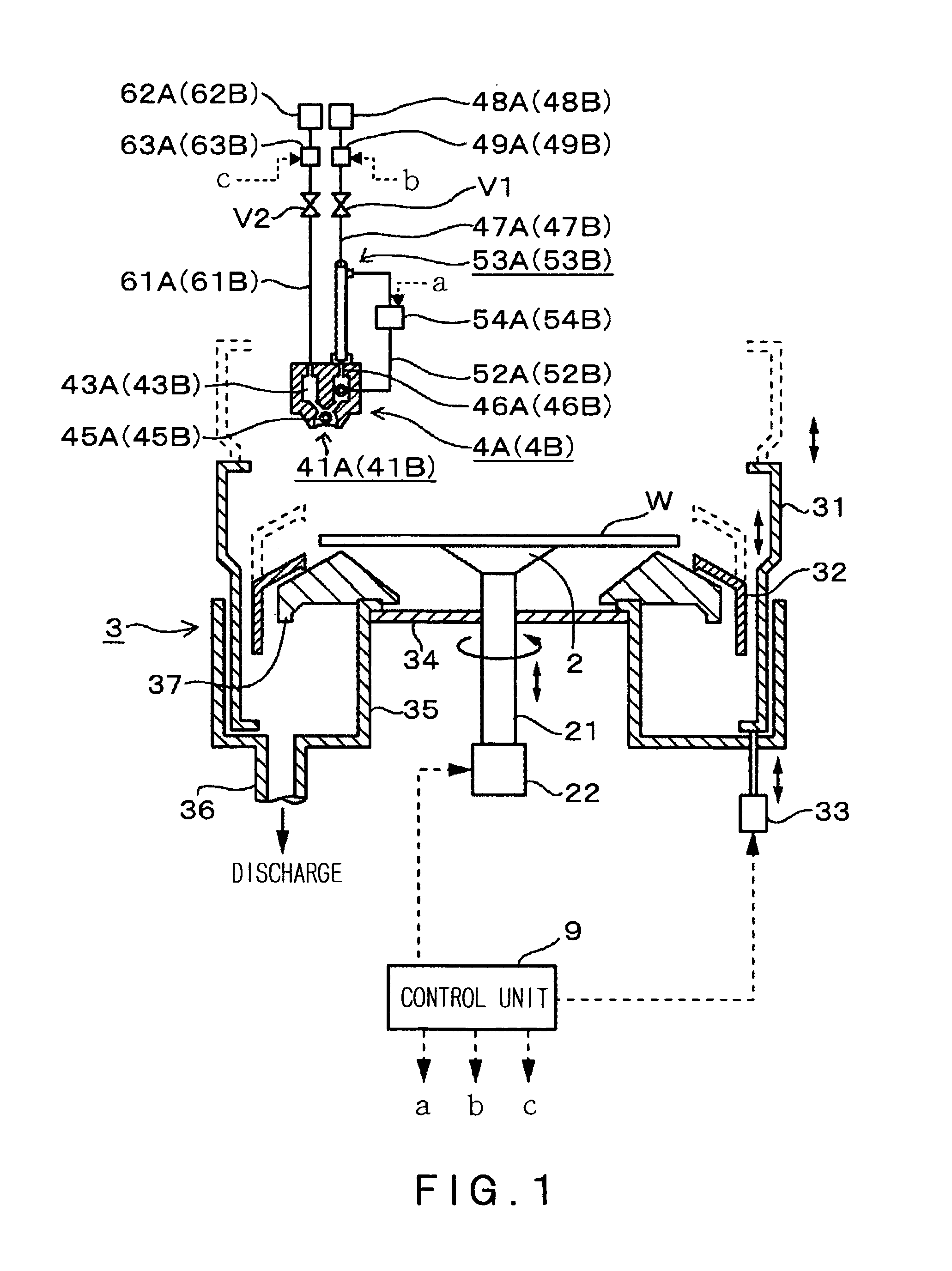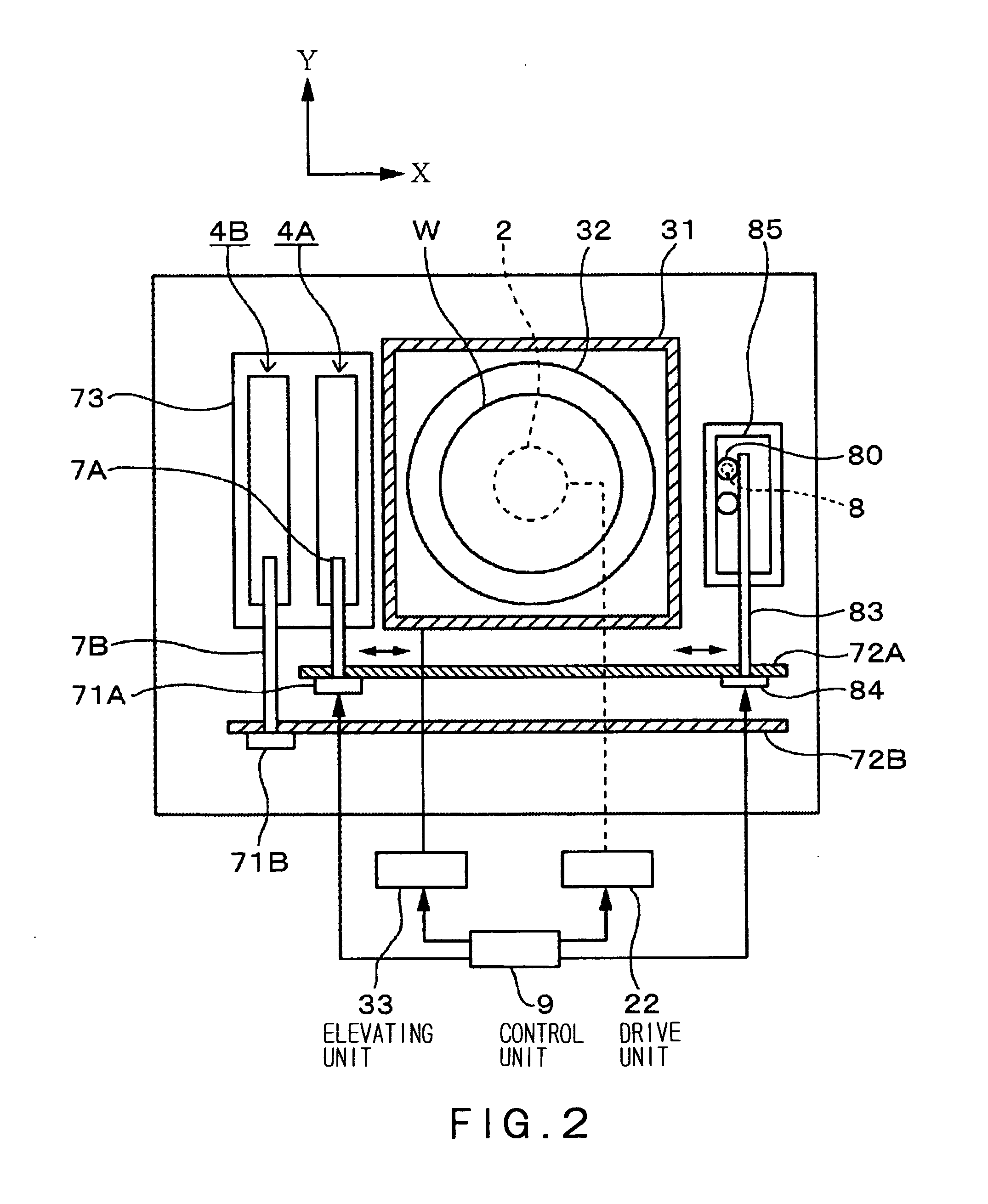Developing device and developing method
a technology of developing device and developing method, which is applied in the direction of liquid/solution decomposition chemical coating, instruments, photosensitive materials, etc., can solve the problems of dissolved resist components that begin to exhibit adverse effects and diffuse dissolved resist components forcibly, and achieve uniform line width
- Summary
- Abstract
- Description
- Claims
- Application Information
AI Technical Summary
Benefits of technology
Problems solved by technology
Method used
Image
Examples
Embodiment Construction
[0036] A developing apparatus in one embodiment of the present invention will be described with reference to FIGS. 1 and 2. Reference numeral 2 denotes a spin chuck (i.e., a substrate holding unit) for holding a substrate (e.g., a wafer W) in a horizontal attitude by holding the center portion of the back side of the substrate by suction. The spin chuck 2 is connected to a drive mechanism 22 through a rotational shaft 21 and can be rotated, raised and lowered together with the wafer W held thereon, by the drive mechanism 22.
[0037] A cup set 3 is provided so as to surround the wafer W held on the spin chuck 2. The cup set 3 comprises an inner cup 32 and an outer cup 31 each having an opened top end. The outer cup 31 has an upper portion thereof having a shape of a rectangular tube and a lower portion thereof having a cylindrical shape. The inner cup 32 has a shape of a cylinder having an upper portion thereof tapered inwardly. The outer cup 31 is raised and lowered by an elevating m...
PUM
| Property | Measurement | Unit |
|---|---|---|
| temperature | aaaaa | aaaaa |
| temperature | aaaaa | aaaaa |
| temperature | aaaaa | aaaaa |
Abstract
Description
Claims
Application Information
 Login to View More
Login to View More - R&D
- Intellectual Property
- Life Sciences
- Materials
- Tech Scout
- Unparalleled Data Quality
- Higher Quality Content
- 60% Fewer Hallucinations
Browse by: Latest US Patents, China's latest patents, Technical Efficacy Thesaurus, Application Domain, Technology Topic, Popular Technical Reports.
© 2025 PatSnap. All rights reserved.Legal|Privacy policy|Modern Slavery Act Transparency Statement|Sitemap|About US| Contact US: help@patsnap.com



